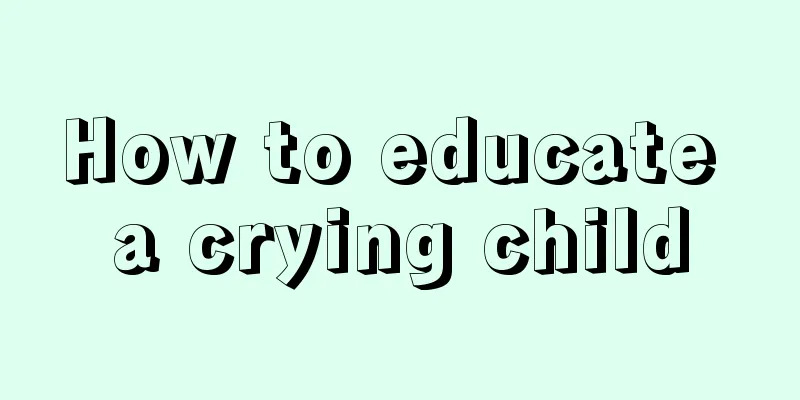What should we pay attention to when adding complementary food to children?

|
Children's bodies are very fragile, so parents need to pay careful attention to their care in daily life to ensure the safety of children and avoid danger to children due to diet and other problems. This is especially important when adding complementary foods. So what should parents pay attention to when adding complementary foods to children? Let me introduce this issue to you below. Allow your baby to adapt gradually. Try one complementary food first (such as rice flour), and then try another one (such as wheat flour) after 3-7 days of adaptation, and gradually expand the variety. During the baby's "trial feeding" stage, pay attention to whether there are allergic reactions (such as skin rash, diarrhea, vomiting, etc.). If there are allergic reactions, stop feeding temporarily. Complementary food should be introduced from thin to thick, and from light to heavy. The amount of complementary food increases from small to large. After the child has adapted to a complementary food, the amount can be gradually increased. The complementary food should be from fine to coarse. Tender food is easy to swallow and digest. For example, you can first make vegetable puree with vegetable leaves and feed it to the baby. Later, you can gradually chop the vegetables into coarser pieces and make them into chopped vegetables. If the baby has a good stomach, you can start adding complementary foods from 6 months old. The complementary foods that can be added to a 6-month-old baby include porridge, biscuits, bread, toasted steamed bread slices, fish meal, liver meal, vegetable meal, meat meal, soy products, fruit juice puree, etc. However, it should be noted that the addition of each complementary food must follow the principle of transitioning from less to more, from one to multiple, from thin to thick, and from semi-solid to solid food. In short, it is a gradual transition and diverse additions. However, for babies aged 6 months, milk is still the main food, because milk powder is more comprehensive in nutrition. It is still necessary to feed milk powder as the main food and complementary food as the supplement. The daily milk intake is 800~900 ml. When ensuring the daily milk intake, 1~2 times of complementary food can be added. The above is my opinion on this issue. If a child has a problem with eating, it will threaten the child’s physical health. Therefore, the child needs to pay attention to take the above methods for treatment in time, so as to ensure the child’s safety and avoid affecting the baby’s health. |
<<: Baby birth height and weight head and tail comparison standard
>>: What to do if a child has cough and bronchitis
Recommend
The child's eyes are covered with eye mucus
In life, many children suffer from conjunctivitis...
What should I do if my baby has a fever after receiving the meningococcal vaccine?
In order to prevent some diseases, parents often ...
What should I do if my child has white spots on his stomach?
Many people have white spots for no apparent reas...
How to treat baby's painful urination
Many babies feel pain when they urinate, which af...
Is it good for children to drink milk every night?
Many children are now over one year old, but they...
Is it good for babies to drink more boiled water?
Elderly people often say that "drinking wate...
Do you know the cause of diarrhea in newborn babies?
Since newborn babies' body functions are stil...
Are there any sequelae of meningitis in children? What are the harms?
Meningitis is one of the most common diseases amo...
What should I do if my child plays with private parts?
According to Freud's theory of psychological ...
What to do if your child's tongue is white
In our country's traditional Chinese medicine...
Newborn baby's tongue turns white after drinking milk powder
Newborns cannot directly consume adult food becau...
What causes itchy eyes in children?
Itchy eyes in children are usually caused by prob...
Tips for cleaning earwax for two-year-old babies
A two-year-old baby can already walk, and at this...
What are the signs of childhood psychosis?
Childhood schizophrenia is a relatively serious p...
What should I do if my child’s butt is red and itchy? These methods work great!
Many parents will let their children wear open-cr...









